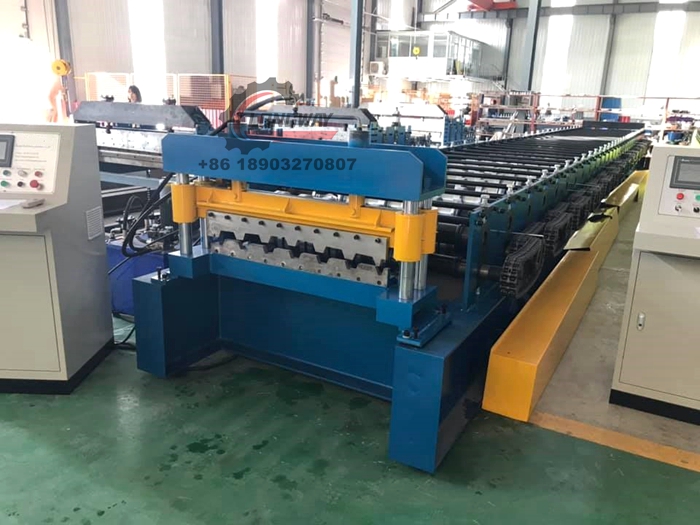Metal Roof Sheet Roll Forming Equipment for Efficient Roofing Solutions
The Evolution and Benefits of Metal Roofing Sheet Roll Forming Machines
In recent years, the demand for metal roofing has surged significantly, primarily driven by its durability, aesthetic appeal, and energy efficiency. As a result, the metal roofing manufacturing industry has witnessed substantial technological advancements, with roll forming machines taking center stage. These machines have revolutionized the production process, enabling manufacturers to meet the increasing market demand for high-quality metal roofing sheets.
Understanding Roll Forming Machines
Roll forming is a continuous bending operation in which a long strip of metal is gradually shaped into the desired profile. The process involves passing the metal through a series of rollers, each one progressively bending the sheet into the final shape. Roll forming machines are designed to produce a wide variety of metal roofing profiles, including standing seam, corrugated, and tiled designs.
The typical setup of a metal roofing sheet roll forming machine consists of a decoiler, forming rollers, a cutting system, and an operator interface. The decoiler unwinds the metal coil, which is then fed into the forming rollers. As the metal passes through these rollers, it is shaped while maintaining precise dimensions. A cutting mechanism subsequently trims the sheets to the desired length, ready for packaging or shipment.
Advantages of Metal Roofing Sheet Roll Forming Machines
1. Efficiency and Speed Roll forming machines can produce metal roofing sheets at remarkable speeds, often reaching several meters per minute. This efficiency leads to reduced production time and, consequently, lower labor costs. Manufacturers can respond quickly to orders, allowing for just-in-time manufacturing and reducing inventory costs.
2. Consistent Quality One of the most significant advantages of using roll forming technology is the consistency of the products produced. The automated nature of these machines minimizes human error and ensures that each metal sheet meets strict quality standards. The precision of the forming process enhances the overall finish, ensuring that roofing sheets fit together flawlessly during installation.
3. Material Utilization Roll forming optimizes material usage by producing less scrap compared to traditional metal shaping methods. The continuous nature of the process allows manufacturers to create longer lengths of roofing material with fewer interruptions, significantly reducing waste.
metal roofing sheet roll forming machine

4. Versatility Metal roofing sheet roll forming machines can handle a variety of materials, including galvanized steel, aluminum, and stainless steel. This versatility enables manufacturers to meet the diverse needs of their customers, who may require different types of metals for aesthetic or functional reasons. Furthermore, the machines can be easily adjusted to create different profiles, expanding production capabilities without the need for significant investments in new equipment.
5. Energy Efficiency Modern roll forming machines are designed to be energy-efficient, consuming less power while maintaining high production rates. This is particularly important in an era where sustainability and environmental responsibility are prioritized. By utilizing energy-efficient technologies, manufacturers can reduce their carbon footprint and operating costs.
6. Low Maintenance These machines are built with durability in mind, often requiring less maintenance than other manufacturing equipment. Regular maintenance checks can ensure longevity and consistent output, further enhancing the cost-effectiveness of the operation.
Future Trends in Metal Roofing Sheet Roll Forming
As the construction industry continues to evolve, so too will the metal roofing sector. Innovations, such as smart technology integration and automation, are expected to further streamline the roll forming process. Manufacturers are increasingly exploring ways to incorporate IoT (Internet of Things) technologies to monitor production, track efficiency, and predict maintenance needs.
In addition, as sustainable building practices become more critical, the demand for eco-friendly materials and processes is on the rise. Roll forming machines can adapt to these trends by producing roofing sheets that use recycled materials and incorporating energy-efficient technologies into production.
Conclusion
In summary, metal roofing sheet roll forming machines have transformed the way roofing materials are produced, bringing efficiency, consistency, and versatility to the manufacturing process. As the industry continues to advance, these machines will play a crucial role in meeting the growing demands for quality and sustainability in metal roofing. With ongoing innovations, manufacturers can expect to achieve even greater efficiencies and capabilities in the years to come, ensuring that metal roofing remains a top choice for builders and homeowners alike.
-
Roof Panel Machines: Buying Guide, Types, and PricingNewsJul.04, 2025
-
Purlin Machines: Types, Features, and Pricing GuideNewsJul.04, 2025
-
Metal Embossing Machines: Types, Applications, and Buying GuideNewsJul.04, 2025
-
Gutter Machines: Features, Types, and Cost BreakdownNewsJul.04, 2025
-
Cut to Length Line: Overview, Equipment, and Buying GuideNewsJul.04, 2025
-
Auto Stacker: Features, Applications, and Cost BreakdownNewsJul.04, 2025
-
Top Drywall Profile Machine Models for SaleNewsJun.05, 2025








